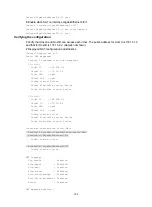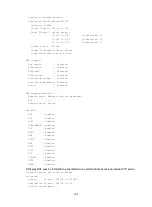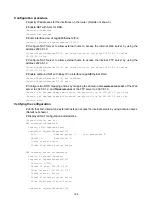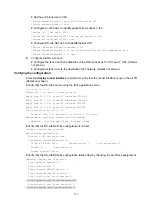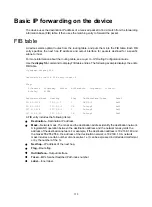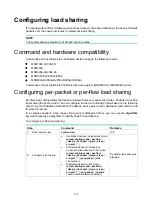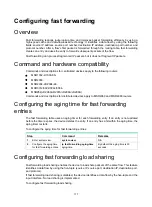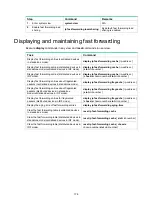
177
Configuring fast forwarding
Overview
Fast forwarding reduces route lookup time and improves packet forwarding efficiency by using a
high-speed cache and data-flow-based technology. It identifies a data flow by using the following
fields: source IP address, source port number, destination IP address, destination port number, and
protocol number. After a flow's first packet is forwarded through the routing table, fast forwarding
creates an entry and uses the entry to forward subsequent packets of the flow.
Fast forwarding can process fragmented IP packets, but it does not fragment IP packets.
Command and hardware compatibility
Commands and descriptions for centralized devices apply to the following routers:
•
MSR1002-4/1003-8S.
•
MSR2003.
•
MSR2004-24/2004-48.
•
MSR3012/3024/3044/3064.
•
MSR954(JH296A/JH297A/JH298A/JH299A)
Commands and descriptions for distributed devices apply to MSR4060 and MSR4080 routers.
Configuring the aging time for fast forwarding
entries
The fast forwarding table uses an aging timer for each forwarding entry. If an entry is not updated
before the timer expires, the device deletes the entry. If an entry has a hit within the aging time, the
aging timer restarts.
To configure the aging time for fast forwarding entries:
Step Command
Remarks
1.
Enter system view.
system-view
N/A
2.
Configure the aging time
for fast forwarding entries.
ip fast-forwarding aging-time
aging-time
By default, the aging time is 30
seconds.
Configuring fast forwarding load sharing
Fast forwarding load sharing enables the device to load share packets of the same flow. This feature
identifies a data flow by using the five-tuple (source IP, source port, destination IP, destination port,
and protocol).
If fast forwarding load sharing is disabled, the device identifies a data flow by the five-tuple and the
input interface. No load sharing is implemented.
To configure fast forwarding load sharing:

